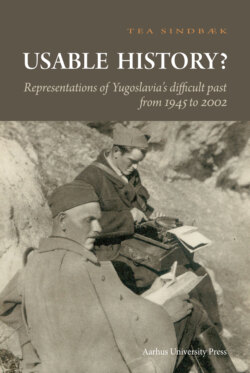Читать книгу Usable History? - Tia Sindbaek - Страница 19
На сайте Литреса книга снята с продажи.
Ustasha crimes
ОглавлениеThe radical and violent anti-Serbian ideology of the Ustasha rule was expressed by several ministers, but perhaps most clearly on the 2nd May 1941 by the Ustasha minister of legislation, Milovan Žanić: “there is no method that we as Ustasha will not use to make this country truly Croatian and clean it of Serbs …”13 During the spring and summer of 1941 groups of Ustasha soldiers raided Serbian villages and committed excessive massacres. Serbs were killed on the spot, or they were tied and locked inside churches or other buildings, which were then burned. Sometimes they were driven away, slaughtered and thrown into ravines. In some cases only men were killed, while at other times women and children were also slaughtered.
The first round of mass slaughtering took place in late April and early May 1941, in villages near Bjelovar east of Zagreb, around Glina north of the Bosnian border and in the Krajina region of Kordun, where probably 200-300 were killed at each place. During June 1941, the Ustasha instigated new waves of massacres in Herzegovina and in Dalmatia. After most of the German soldiers had departed for the Eastern Front, the Ustasha accelerated their murderous campaign. In July more massacres took place in Dalmatia and Krajina, of which the burning of several hundred Serbs in the church in Glina is particularly notorious. The Ustasha also spread their terror to Western and Eastern Bosnia, where probably tens of thousands of Serbs were killed in murderous raids.14 In April 1942, the Serbs of Eastern Bosnia fell victim to a massive wave of Ustasha terror as part of a combined Ustasha-German offensive against the insurrection. Special Ustasha units raided Serbian villages, slaughtered the inhabitants, and forced many Serbs to flee towards the brink of Drina, where mass slaughtering took place.15
The rate of these massacres was later slowed down in some areas, partly because of the outbreak of the various insurrections, which controlled large parts of the NDH, and partly by Italian occupation of NDH territory all up to the German-Italian demarcation line.16 But Ustasha raids and massacres continued throughout the war. The village massacres left numerous mass graves and pits full of skeletons. These graves and pits posed problematic questions to Yugoslav historiography decades later.
As another means to rid their territory of Serbs, the Ustasha expelled thousands to Serbia, while many others fled to escape the terror. It is estimated that in the summer of 1942, about 200,000 transferees and refugees from the NDH were in Serbia.17 In the autumn of 1941, the German administration in Serbia closed the border for official deportations from the NDH. This in combination with the growing armed insurrection forced the Ustasha to change strategy. Especially from September 1941 to early 1942 a policy of forced conversions of Serbian peasants was widely implemented, only to be gradually abandoned when the Ustasha leadership changed strategies again and opted for the establishment of a Croatian Orthodox Church. It is estimated that about 100,000 Serbs in the NDH were forcibly – or under threat – converted from Orthodoxy into Catholicism, in order to turn them into Croats.18
The Ustasha regime also ran concentration camps and death camps where prisoners were worked and starved to death. Others were brought there just to be executed. The camp guards were notorious for their brutality, using relatively primitive killing methods; many victims were slaughtered by knife, slain with heavy mallets, or simply shot and buried in mass graves. But numerous types of torture and mutilations happened as well. Most of the victims were Serbs, Jews and Roma, but also communists and all sorts of regime opponents, Croats as well, were sent to the camps. In the most notorious of these, the camp complex at Jasenovac, it is now estimated that more than 80,000 persons were killed, of which at least 50,000 were Serbs. Thousands perished in other camps, such as Jadovno and Jastrebarsko.19 The numbers of victims of the camps, particularly of Jasenovac, have been intensely discussed in Yugoslav and post-Yugoslav historiography and popular history.
